The Long Con
Art Conspiracy's pivotal players put 10 years of activism into perspective
It’s hard to measure the impact an 18-x-18-inch piece of plywood can have. From this relatively humble bit of material has come thousands of works of original art; $250,000 in funding for local nonprofits like My Possibilities, Preservation Link and Music Angels; and the establishment of a community of like-minded creative people known as Art Con.
This home-grown grassroots fundraiser has expanded in leaps and bounds over the last decade, and its impact on the Dallas arts world is only getting stronger. Just a few days before the 10th edition benefiting the Anita N. Martinez Ballet Folklorico, we look back on what makes Art Con an event like no other, straight from the mouths of some of the key players.
THE BEGINNING
Jason Roberts (co-founder): “I got this crazy idea, and [artist] Steve Keene was the foundation. He’d go into an art gallery the day before a show, fill it with all these blank canvases, paint them the night before and set up a donation box. His goal was to put as much art on the walls as he could. I wanted to bring 20 artists out and paint the night before, and Sarah [Jane Semrad] said, ‘Let’s do 100 artists.’”
“Every year we wanted to discover a new local charity in our area that needed recognition to get to the next level.” — Jason Roberts, co-founder
Sarah Jane Semrad (co-founder): “It started with me and bunch of friends, in particular Jason, and I took the lead to do a fundraiser after Hurricane Katrina. Jason was a pivotal person in the music community at the time, and I was a pivotal person on the art scene, and we decided to join forces and conspire artists and musicians to do something.”
Erica Felicella (artist/curator/current executive director): “I came in the first year and made art and ended up volunteering. I had a meeting with Sarah Jane and left with a T-shirt and packet. That woman is just so compelling. You don’t say no!”
Jason Roberts: “Sarah Jane is an organizational guru. I can come up with crazy ideas, and she can take it to the next level getting everyone organized. It’s a marrying of both of our strengths.”
Sarah Jane Semrad: “The first year we topped out at about 100 artists. They show up with their supplies, we give them their plywood and let them do their thing. We can’t have them creating all the time, so they came in shifts — 8 am to midnight — and we’d kick them out after three hours.”
Richard Ross (artist): “I got involved because I was in Pigeon Stone, which was a grassroots art movement that would put on shows where you wouldn’t expect an art show. Pigeon Stone started up and Art Love Magic started up, and what Art Conspiracy did was it brought all those groups together under a common cause.”
Erica Felicella: “So many people showed up to the dirty, dirty Texas Theatre; it hadn’t been reopened yet. [Board member emeritus] Cari Weinberg personally vacuumed every seat. When so many people show up, you have to do it again.”
Sarah Jane Semrad: “We rented out the Texas Theatre, and because we rented out that venue, we decided that Art Conspiracy was the perfect name for it. After it was all over, all of the artist and musician attendees were literally freaking out and saying, ‘When is the next one?’ We decided to switch gears and make it about the artists and the musicians and put the money back into the scene.”
Jason Roberts: “A lot of us had started our own nonprofits, and we knew how hard it was to get our seed funding. As artists, it’s really difficult to make a living, and there’s not a lot of money to survive. So if we can gather together, we can help other organizations that are struggling and donate this work as a way to help them get off the ground. Every year we wanted to discover a new local charity in our area that needed recognition to get to the next level.”
THE EARLY YEARS
Erica Felicella: “The early stages were a handful of us. We used to organize all of Art Con on the front porch on notepads. Our site plan was drawn out on grid paper, no computers. I jumped right in on the planning.”
“The beautiful thing about Art Con is it’s not exclusive. It’s really varied.” — Nicole Horn, former participating artist
Nicole Horn (former participating artist/patron): “Along with Scott [Horn], I was brought in by Sarah Jane and we were art handlers for her. That progressed and I was curator for two years in 2011 and 2012, which was amazing. The beautiful thing about this is it’s not exclusive: It attracts people who have never considered themselves an artist to be part of a large show and allows established artists to give back to the community. It’s really varied, and that’s the best part.”
Sarah Jane Semrad: “The second year I was leading La Reunion at the time, and it was going to be the beneficiary because so many of us were involved with it. After the second one, we thought we could make it an annual fundraiser for La Reunion or other arts and music organizations, and we chose the second route.”
Erica Felicella: “It’s different every year, but there’s some requirements you have to meet. We like to take care of the smaller organizations. We do our research, do some site visits and it comes down to a vote.”
Scott Horn (former participating artist/patron): “The second year we did it at the Longhorn Ballroom, and the day of the event it was snowing and icing out. Our truck backed into the awning and knocked it onto the owner of the venue’s truck. That year was the coldest it’s ever been. We’d take turns huddling over the heaters to get the feeling back in our fingertips.”
Sara Jane Semrad: “The site of Art Con 2 was the Longhorn Ballroom, and our U-Haul truck accidentally knocked over a carport thing that fell on the owner’s car. Thank goodness we had the expensive insurance policy.”
Robert McCollum (auctioneer): “The second year I interviewed Jason and Sarah Jane and recorded the bands, and that was a year it went from this weird idea to this real thing people knew about. From that point on, I was completely hooked.”
Richard Ross: “The third year I’m pretty sure was Deep Ellum; they kind of run in together. I had to paint in the evening, and I ended up outside because I used spray paint. I was out on Main Street, and people were walking around. There were people out there smoking like, ‘What are these guys doing?’”
Jason Roberts: “Our early mission was to put art in unusual spaces, places that were forgotten about. We wanted to get outside of traditional venues to marry the idea of art in places you wouldn’t expect to find.”
Butch McGregor (building owner, West Dallas Investments): “Someone came to us and was looking for a space and wondered if we had anything that might accommodate them. We had a wide-open freight dock where Trinity Groves is now. We worked together on Art Con 4 and got it all fixed up, and the rest is history.”
THE MUSIC
Jason Roberts: “A lot of my musician friends were artists or married to artists, and I loved the idea of marrying these worlds. In the music world, there wasn’t a lot of cross talk. In other cities, bands played on each other’s records. In Dallas, we had a disparate scene, and we weren’t coming together as much unless we played shows.”
“It’s always an honor to play among a group of people with great appreciation for art.” — Sarah Jaffe, musician
Becki Howard (music supervisor): “One of the things I noticed when I first joined Art Con is how little the music and art community overlapped at the time. I think [the event] is beneficial to the bands involved, and if you have compelling music it makes people want to stay for the auction. It makes the entire experience stronger.”
Robert McCollum: “I think a reason most people got involved before they realized it would be a huge thing that could raise the money was they wanted to hang out with the cool kids. The musicians and artists rarely overlapped, and I think Art Con is largely responsible for connecting the dots.”
Erica Felicella: “We’ve had Ishi, Zhora, Telegraph Canyon — you name it. We had Sarah Jaffe when it was just her, a guitar and a cello player seven years ago. Last year, we were able to bring her back as an alumna closing DJ.”
Sarah Jaffe (musician): “It’s always an honor to play among a group of people with great appreciation for art, great artists themselves, the people who work endlessly to make sure it runs smoothly each year, and, of course, the cause itself. As someone who lives and works in this community, how could I not want to be a part of something so wonderful?”
Becki Howard: “I think music and art are equal quality, which is important for the event. It’s valuable that the music be good enough that people want to stay, but the event is about the art. I’d say the art is a tier above, but I want the quality to be similar.”
THE ART
Erica Felicella: “We created a lottery system so there’s a 24-hour window to put your name in a hat. We’ll see about 400 applicants, and the lottery happens the very beginning of October. We have someone in our team that hits a button and sends us a list. It’s heart-breaking when alumni artists don’t get through, but the point is to continue to evolve, bring in new energy and new voices.”
Robert McCollum: “The first two years people were like, ‘This is hilarious, I’ll spray paint my name,’ but every year after, people came with sincere artistic intentions, whether they were a seventh grader or adult who hadn’t painted before, or someone who was repped by a gallery.”
Kate “K8” Langley (artist): “My parents went to the first two and thought it’d be cool [to submit a piece], but they didn’t think I’d get in, but I did. I was 6 and had no idea what to do, but since I loved mermaids at the time, that made me feel comfortable, so I painted a mermaid.”
“It’s heart-breaking when alumni artists don’t get through, but the point is to continue to evolve, bring in new energy.” — Erica Felicella, executive director
Reid Robinson (auctioneer): “2009 was my first year. The auctions are very unpredictable. The main thing is you just want to get your people to your auction. I’ll be walking the building and looking for people I know, and I’ll also see who is interested in each piece.”
Corey Godfrey (artist): “My favorite experience from an artist’s perspective is when I did a clock of an erotic female figure, and she had yarn hanging off of her. When they did my auction, there were a few guys on stage, and because it was my work, they kept their shirts off and there was this weird striptease situation. They took my theme of the art and went with it.”
Scott Horn: “It seems like every year there’s a spirit animal of the event; one year it was whales. Owls and birds are perennials. It’s not always an animal — one year there were a whole bunch that involved skulls. It’s one of the things we look for, to pick out the motifs.”
Reid Robinson: “We had a final auction for a Cabe Booth piece that started off at a $50 bid and escalated up to $1,300. People were fighting over this picture of Bill Murray. The frenzy was incredible. It’s really a cult of personality: The highest bidding pieces are up to who painted them.”
Nicole Horn: “We usually guess ahead of time what will be the big-ticket piece, and we’re usually wrong.”
Butch McGregor: “I can’t say I’ve put a lot of bids in, but I bid on something one time, and it would pass me so fast, I was delighted to see it.”
Corey Godfrey: “We’re not going for crazy high price points, we just want it to go for certain price points because we want to make sure it does well for the cause. It does get a little intense at times for me personally.”
Sarah Jane Semrad: “We’re there to raise money, but it’s also a way for our community to collect affordable art. I’ve personally witnessed some amazing pieces that went for $20. Art Con turns people’s minds [and they realize] ‘I can have original artwork that somebody made in my home.’”
THE FUTURE
Sarah Jane Semrad: “I’m not actually really involved any more as a founder. I sort of realized along the way it was my responsibility to build it out, and it was also my responsibility to let it go. I left after Art Con 6.”
“I think the best thing is really empowering our creative community to take ownership of street-level philanthropy.” — Sarah Jane Semrad, co-founder
Jason Roberts: “I left the board by Art Con 5 or 6. There are some other projects that developed using the Art Con team or ethos — the big one is the Better Block, where we take a block that’s blighted and bring artists and architects and urban planners together. A lot of the genesis of it was based on was what we learned through the Art Cons, bringing a lot of people together to rapidly fix something.”
Nicole Horn: “I finally get to be a guest. It’s weird not being involved! From people I never knew, these are my best friends now. It’s a real family.”
Scott Horn: “Art Con is very much the volunteer team that become s a family. My boss here at work is on the executive team. There’s a spirit of camaraderie that keeps people coming back.”
Richard Ross: “It’s the one day or two days of the year that artists come together as a team; each year you rejoin a conversation where you left off before. Some of us are pretty reclusive, and this brings us together. I like that [Art Con] is not about ego. It’s about results.”
Kate “K8” Langley: “This is my eighth year [at Art Con], and connecting with artists has helped me grow as an artist too. I like the way you can go around and see the artist’s process, what was just a plain board you see all the steps and you get to talk to the artists. Then on auction day, it’s fun to hear how much they raise for a certain organization.”
Butch McGregor: “It brings a lot of people together. You get people from 6 years old to 60 years old. I always check it out — I’ve been to all but one of the shows. It’s just fun and full of energy.”
Becki Howard: “Musically we thought about going big or go home and spending more money on talent, but none of us felt right about it. It just wasn’t us as an organization. Art Con has always done really good local legends mixed in with people new and up and coming. Dallas has such a wealth of talent in the music scene I don’t think we’ll be tapped out anytime soon.”
Erica Felicella: “A lot of people think we’re one big fundraising event a year, but we launched something that’s kind of like a living room series with alumni musicians from our roster over the years. It’s a nice way to bring them back.”
Sarah Jane Semrad: “I think the best thing is really empowering our creative community to take ownership of street-level philanthropy. We’ve given all the money away to make our community a better place. It’s funny to think about how many pieces of 18-x-18 plywood are out in the city. I’ll go to people’s homes and see a piece and say, ‘You go that at Art Con!’ The boards themselves have become kind of iconic in people’s lives.”
Jason Roberts: “When you help birth something and you see it go on without you — to me, that’s the sign of success. It’s great to see it thriving in year 10 and see it doing so well.”
---
Art Con X featuring Booty Fade, Son of Stan, Happy Bullets and DJ CeePee is Saturday, November 15, 7-11 pm, at 500 Singleton Blvd. Tickets are $10 and benefit the Anita N. Martinez Ballet Folklorico.

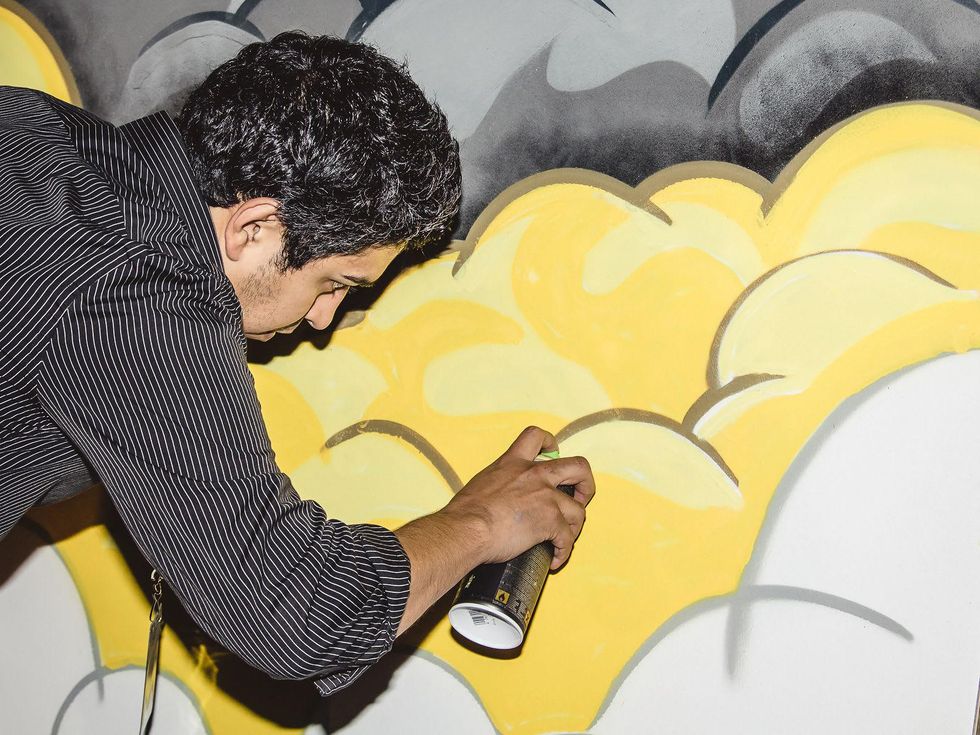

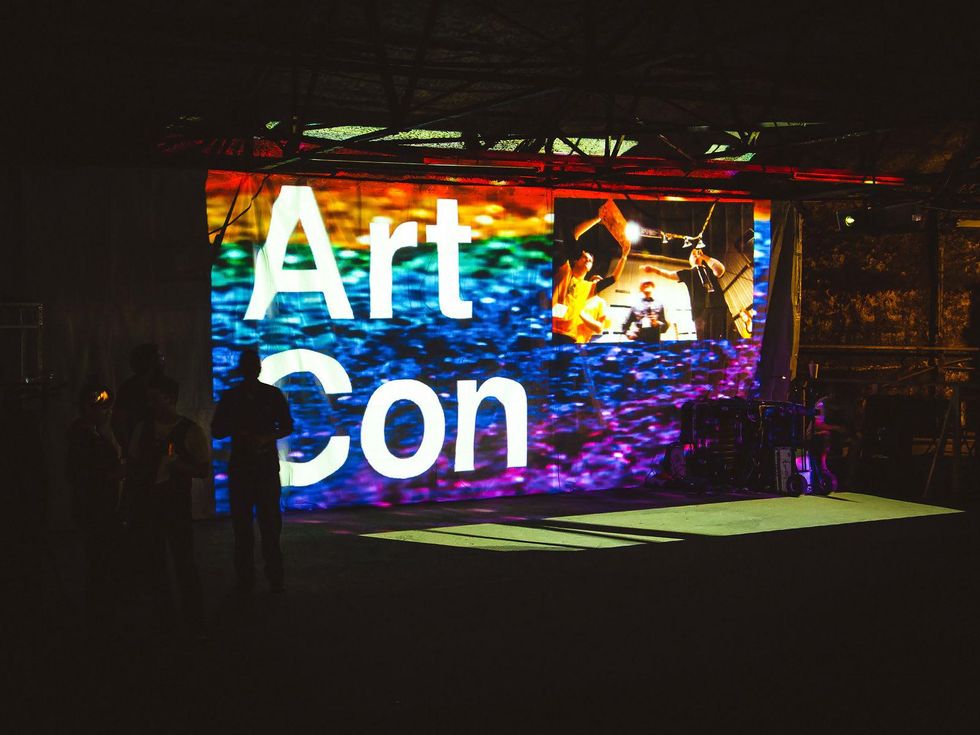
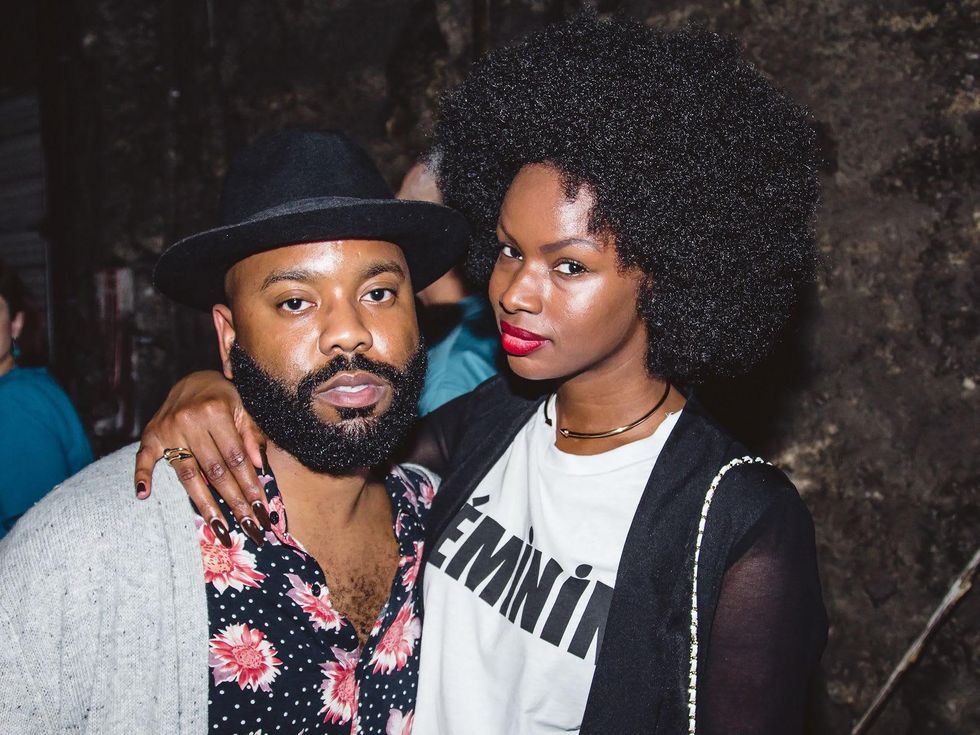
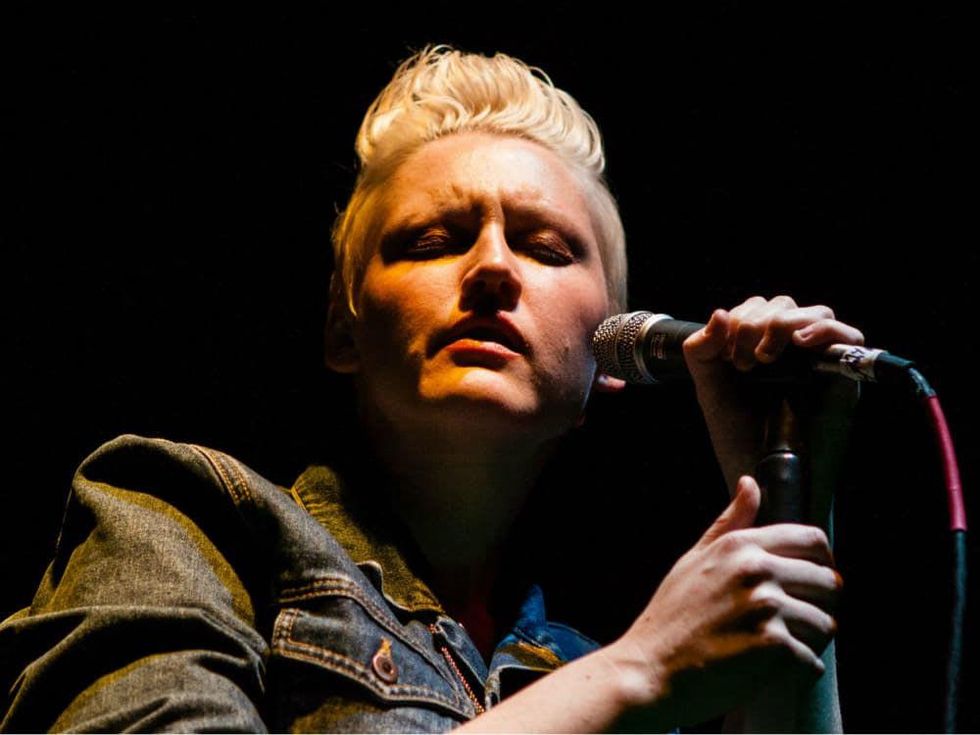
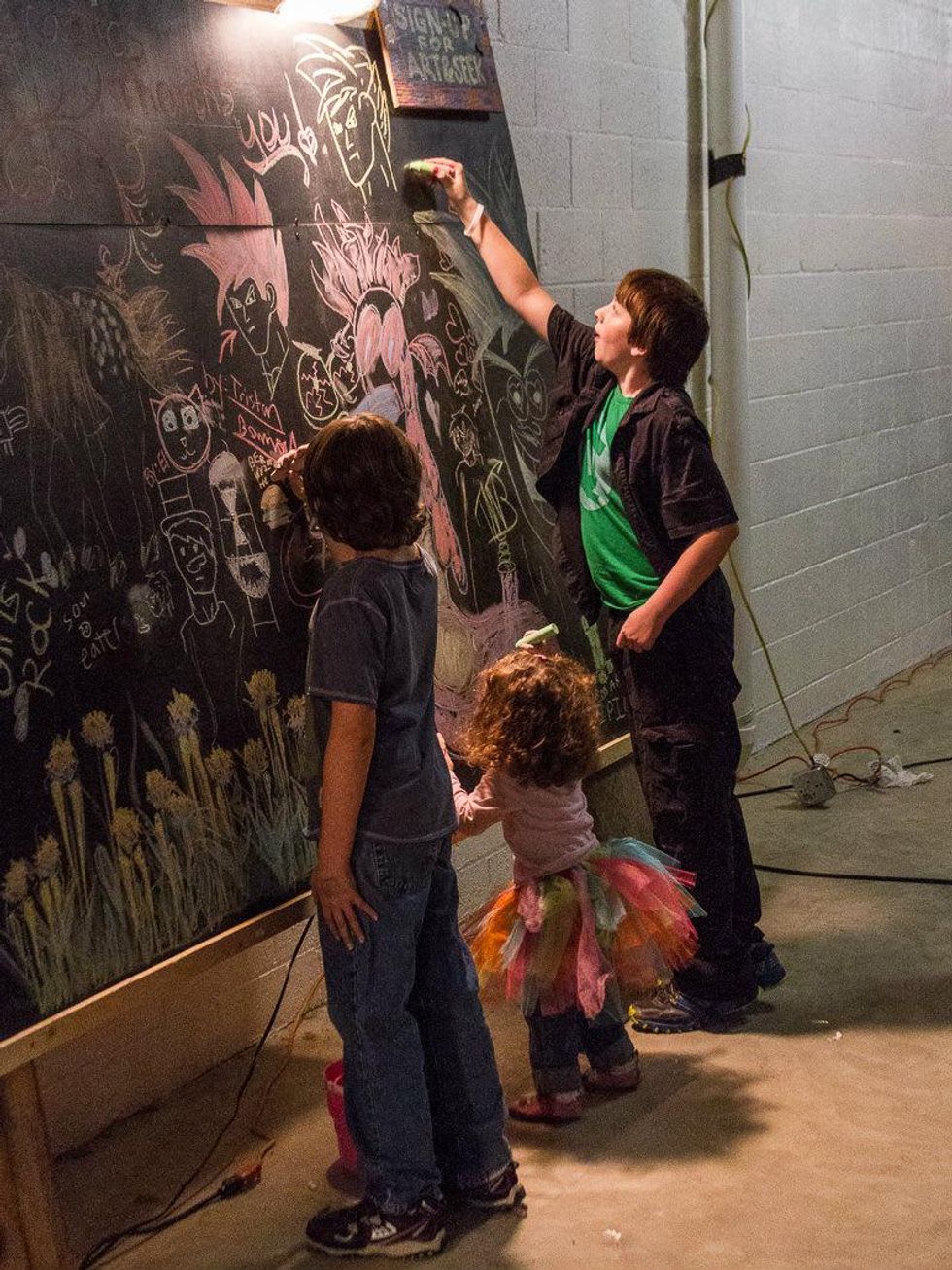


 Guy Fieri and Oren Salomon Courtesy photo
Guy Fieri and Oren Salomon Courtesy photo 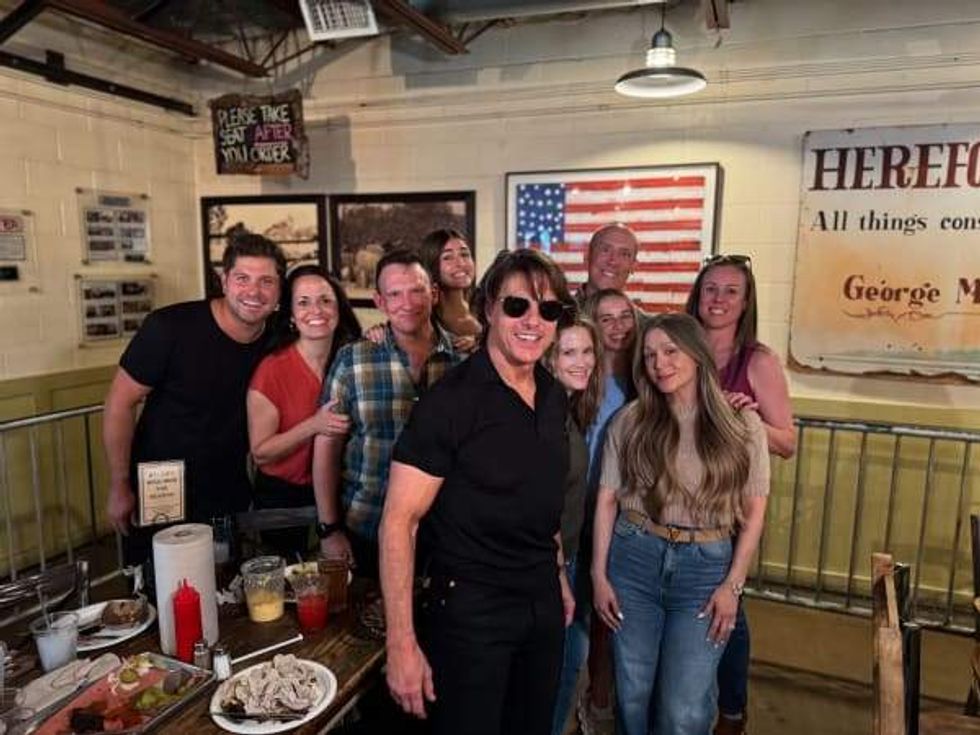 Tom Cruise in Dallas Tribal Cafe
Tom Cruise in Dallas Tribal Cafe 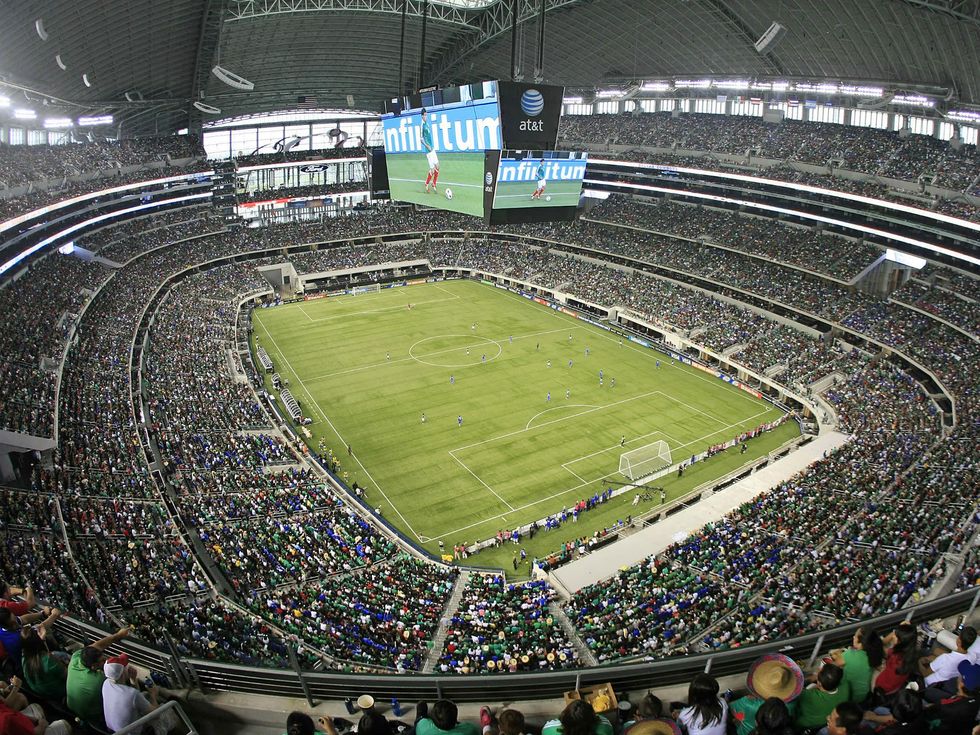 The 2026 FIFA World Cup will be played at AT&T Stadium in Arlington and other venues in the U.S., Mexico, and Canada. Photo courtesy of CONCACAF
The 2026 FIFA World Cup will be played at AT&T Stadium in Arlington and other venues in the U.S., Mexico, and Canada. Photo courtesy of CONCACAF 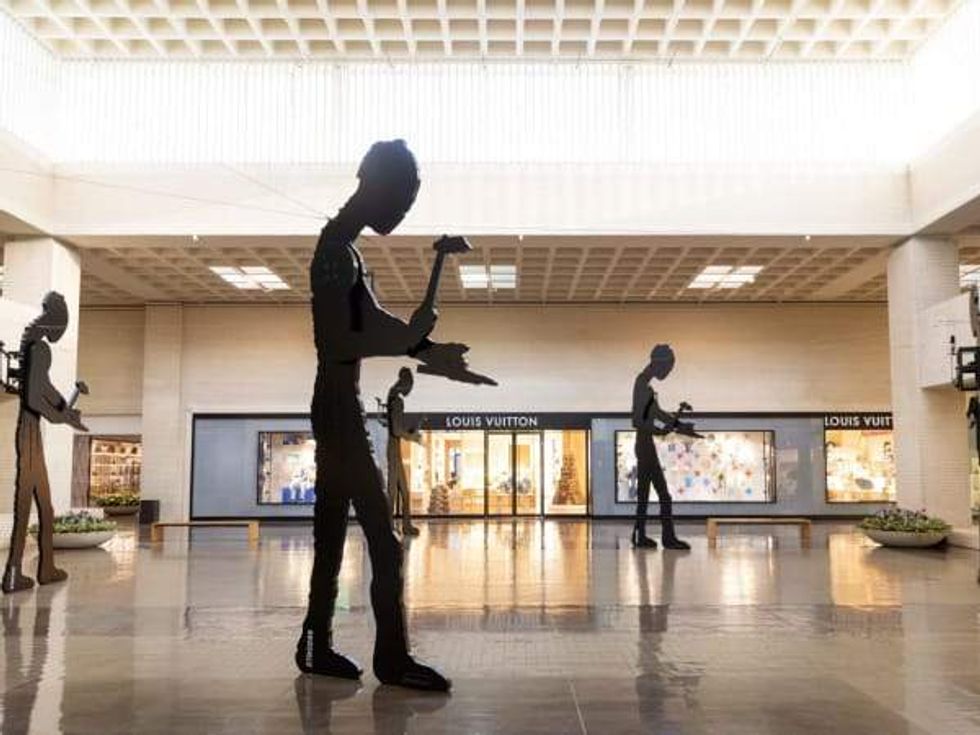 Hammering Men, 1982 NorthPark Center
Hammering Men, 1982 NorthPark Center